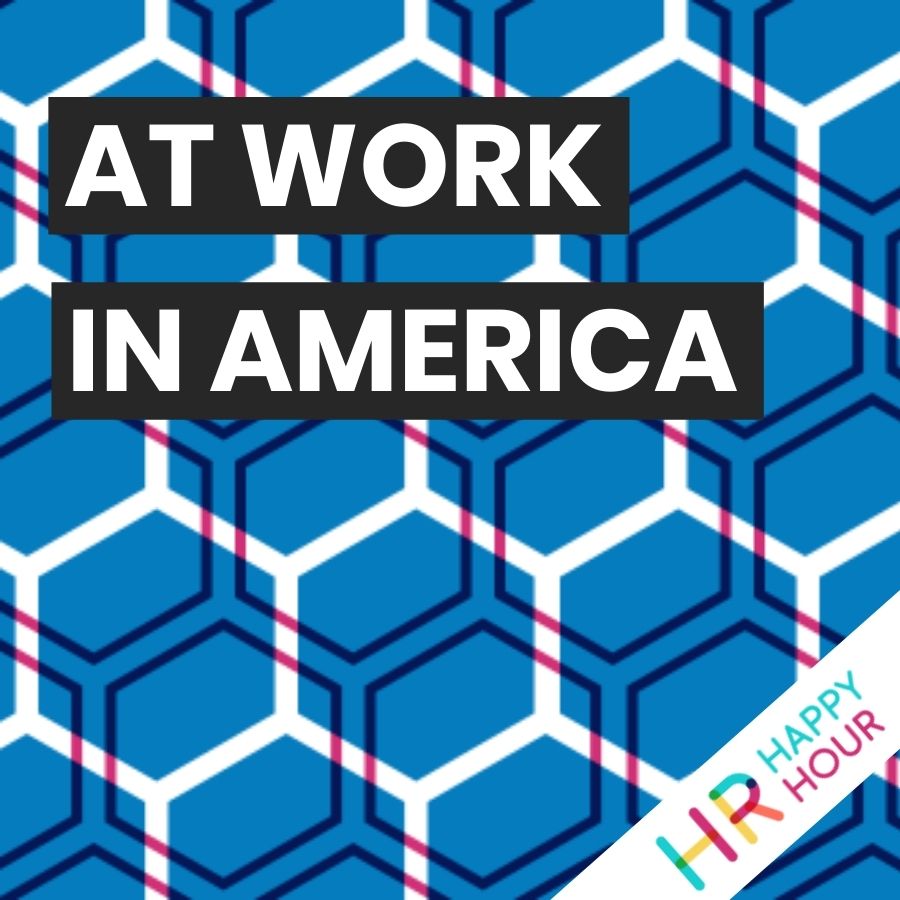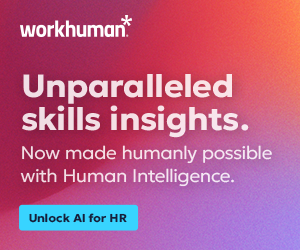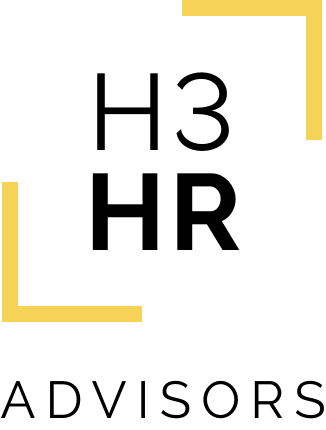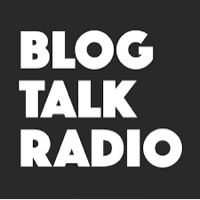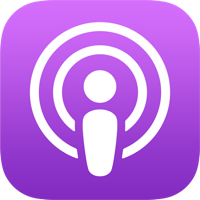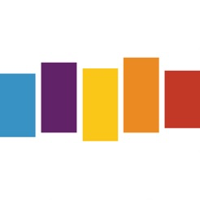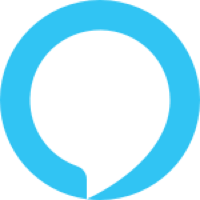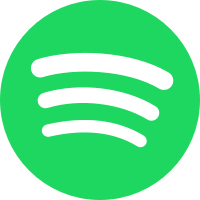Supporting Women in Leadership in 2022
Hosted by

Steve Boese
Co-Founder and Chief Data Officer of H3 HR Advisors and Program Chair, HR Technology Conference

Trish Steed
Co- Founder and Chief Strategy Officer, H3 HR Advisors
About this episode
Guest: Jason Lioy, Chief People Officer at Dawn Foods
This episode of the HR Happy Hour is brought to you by Paychex, one of the leading providers of HR, payroll, retirement, and software solutions for businesses of all sizes. The COVID-19 pandemic has completely changed how many people work, leaving millions of job seekers reevaluating their priorities and making it vital for employers to find new ways to keep them supported and engaged. That’s why Paychex surveyed more than 600 HR leaders and more than 2,000 employees at different-sized businesses across the U.S. to find out what employers are getting wrong when it comes to the needs of their workforce. What they found was a large discrepancy between what employees want, and what employers think they want, when it comes to their organizations. For a look at why employees say they’re leaving their current companies, and what you should be thinking about in order to attract and retain talent, download their findings here
This week, we met with Jason Lioy from Dawn Foods, to discuss the importance of supporting women in leadership and building an inclusive workplace and team culture.
– Story of Dawn Foods Women in Leadership program
– Developing skills and strategies that promote leadership
– Planned and unplanned consequences of empowering female employees
– Importance of leadership accessibility in the workplace
– Impacts of this program on team culture
To check out Dawn careers, click here
Thank you, Jason, for joining the show today! Remember to subscribe to the HR Happy Hour wherever you get your podcasts.
Transcript follows:
Announcer 0:08
Welcome to At Work in America sponsored by Paychex. We welcome a wide and exceptionally impressive array of guests, business leaders, HR leaders, academics, practitioners, consultants and authors to talk about the most timely, relevant and challenging issues that are influencing the workplace today. At Work in America digs in behind the headlines and trends to the stories of real people making a difference in the world of work. And now here are your hosts, Steve Boese and Trish Steed.
Steve 0:42
Welcome to the show, we have a great show today, Trish, we’re going to be talking with Jason Lioy, he’s the Chief People Officer at Dawn Foods. And we’re going to be talking all about women in leadership, which is really important given the date, we’re recording this. It’s actually International Women’s Day, as the day we record this show, the importance of inclusivity in the workplace and leadership, accessibility culture, and maybe even a little bit of kind of navigating through the last couple years of some really trying circumstances, particularly for an organization like Dawn Foods, who’s unlike many of the folks who listen to the show, and we talked to Trish, they haven’t been remote for two years, right. That’s not the business. Right. So I think it’d be good to get into some of that as well. But let me let me intro Jason, welcome to the show. Jason is responsible for developing global team members for long term success at Dawn Foods, Jason helps to build Dawn’s culture into one that attracts, motivates and retain talented employees. As the HR leader at Dawn since 2014, Jason’s previous roles included global HR leadership and development experiences. He was promoted to Chief People Officer from within Dawn, because of his leadership style and his work ethic. Jason, welcome to the show. How are you?
Jason Lioy 1:55
Great, great. Thanks for having me. I’m really excited to have a conversation today. Thank you.
Steve 1:59
Yeah, good to see you. Maybe we’ll start Jason with maybe just give us a backgrounder on Dawn foods, because it’s a really interesting company does really a lot of cool things I think people will will resonate with but they may not know Dawn Foods as a brand, because it’s primarily a kind of a business to business kind of provider.
Jason Lioy 2:20
Right? Yeah, I think it goes without saying I mean, everyone has tasted our products at some point, especially in North America. I mean, from punch keys last week, on Fat Tuesday, to donuts at your local donut shop, the likelihood of you ingesting one of our products is it’s pretty high. So you’ve got a connection to Dawn, we make sweet baked goods. We’re a global leader in bakery manufacturing, ingredients distribution. And we lead the industry across the world in this space. And our primary customers are artisanal bakers or corner bakers, especially here in North America. And then we also do we supply small manufacturers and then other big box retailers like Sam’s and so forth. Their ingredients to make to make donuts and brownies and cookies and their commissaries. So you’ve had our products, especially if you’ve ever ingested a donut likelihood is it’s ours.
Steve 4:52
Jason, one of the reasons why we were excited to have you on the show today specifically and again, it’s timely, right just so happens today is International Women’s Day as the day we record this, it’ll run a little bit later than that. But one of the kind of the kind of interesting projects or programs that you’ve instituted at Dawn is a Women’s Leadership Development Program, very intentional, I’d love for you maybe to tell us a little bit about that program, and maybe start with like why did we even do this in the first place? Right, because it probably didn’t always exist. And you and the team there decided this is something that’s important to dance, maybe we’ll start there. And like, why this initiative was important to you and the team at Dawn?
Jason Lioy 5:37
Yeah, so it really, it’s kind of interesting. So as we’ve developed our DNI strategy over the past several years, you know, it’s starts and stops on certain programs. But you know, one thing we’ve, we’ve made a very conscious effort to do, especially since I became the chief people officers to put programs in place that are sustainable and repeatable. And in 2021, we launched our Women’s Leadership Development Program. And it’s really focused on building and strengthening our talent pipeline for key high potential women. Because as we went through our succession planning process, we identified a bunch of roles that have either ready now or ready in the, in the short term, successors that were women. So it made a net, it was natural to really identify a program to help develop those individuals, because their key pipeline, a key pipeline talent into key roles. And we made a two year commitment. Obviously, for the first cohort, we have 11 women in our first cohort. And then we have obviously 11, sponsors, that are paired up with those women. And we’ve also partnered up with external linkage, to really help facilitate some of our key programming, and key key trading for these individuals. And the program is really showing a lot of solid results already, both anecdotally and quantitatively. You know, when I say anecdotally, as you mentioned, during my intro, I’ve been with Dawn for almost eight years.
Jason Lioy 7:11
And as I came up through the ranks, you know, a lot of the folks that actually are in this program, you know, we would go to either whether it’s sales, sales, events, or other types of events, and we would, we would all, just not complain, but we would commiserate about how we didn’t have formal programs and formal, other types of activities that we could, that we could participate in formally from a training perspective and leadership development perspective. But, you know, it’s been great to actually get into this role and help create this program and identify those people that I’ve been working with for so long. And they, they have all acknowledged actually somebody that last week came and said, you know, what, I just wanted to say thank you, to you, and to Carrie and the leadership team for really investing in this program, and she had emotional and, and really saying that it’s really made a difference in my life and like, my, my daughter’s, you know, now see me in this program, and the things that I’m doing, and it’s really given me the confidence that I’ve needed to really strive for my goals. So that’s really what we’re really excited about in the program.
Trish 8:23
Yeah, thank you for sharing the background. on that. One of the things that kind of strikes me as you mentioned, that you have 11 women who are either ready now or ready, in the very short term, is there a set amount of time for the cohorts? Or does that really depend on the individuals and potentially the jobs they would be going into?
Jason Lioy 8:46
So the way we’ve developed extra DEI strategy in general, as well as this program, it’s not meant to have a start, obviously has a start. But we’re not going to just end it on a particular day. We want to evolve with with these women. And then also the second cohort, you know, because the idea is right now the first cohort, are those folks are identified for like the senior leadership roles from a succession perspective. So the next round, will be folks that are identified successors for then those folks, right, so then they will be sponsors, and so on. So it’s going to actually evolve and be organic and keep growing and growing and growing, like a garden, and then also morph into other things, whether it’s, you know, entry level talent development programs, or, you know, people of color development programs, so on and so forth. So it’s going to continue to evolve, and there’s not stop and obviously start is not stopped, because we want this to be part of our DNA. And the beauty of what we’ve been doing through our DNI strategy. It’s part of our language every day, I mean, I mean leadership, leadership meetings, board meetings, and the language that we’re using is much different than it was three years ago. They’re they’re actually using the word succession using the words my ready now successor, and they’re also talking about the development of people. And it’s really not an HR program. It’s part of our culture, and it’s part of our dialogue and DNA. hope I answered your question.
Trish 10:20
You did. Thank you so much.
Steve 10:24
Right, making those issues and those conversations part of like the normal business flow and the business operations is really key and having leaders right convince, maybe convincing is not the right word. But encouraging maybe is a better word encouraging your operational leaders and the folks who are sponsoring these, these women leadership candidates, if you will, having them kind of embed that into their operations and thinking about hey, next steps, and where my where my next group of leaders coming from is pretty important to I’d imagined.
Jason Lioy 10:54
I absolutely, and I think, you know, for me, that’s the success in my role is that when I have my leadership, talking a language that I would speak. At the same time, it’s one of those things like, I’m not trying to work myself out of a job, but naturally want your leadership to really embrace and absorb that as a priority. You know, people are at the top of our of our Circle of Excellence, it’s our kind of our internal moniker, around our values, and around what we stand for as a company. But if they’re using that language, and they’re talking about it, then that makes my job even better. Exactly, they think about the next best thing, I don’t have to fight for what they should be talking about. So that’s where really, that’s really a key part of our success over the last several years.
Trish 11:46
I think that’s important when you’re talking about the language too, because, you know, for many years, when I was a practitioner, we were always told not to use some of the other air quotes HR language, right? We were kind of, you know, 20 years ago, told, speak in the language of business, as if the people language that you’re mentioning was not part of it. So I’m glad to see finally, that shift has happened, where that is the language of business, being caring and thinking about people’s development, thinking about the succession plans that you have in your organization, and also your strategies around DNI. Can you talk a little bit about? What are some of the skills or competency requirements that you’re trying to develop? Is this heavily focused on soft skills to develop your leadership? Is it focused on more technical skills? Or is it a nice blend?
Jason Lioy 12:38
I view it as a more it’s more heavily geared toward the non technical because the technical side of things, the way I look at it is if you’re expected already have that as a entry ticket, you’re in your role, because you understand finance, or you understand it, or you understand marketing. So we’re not looking to enhance and sell your technical skills unless that’s required for your next step. Right. So there might be some scenarios, we actually have a couple of these women in our in our leadership development program, who were in finance, and now they’re in supply chain. So yeah, we might need to gear some technical training for them, if necessary, but most of the training or development centers around building up themselves, you know, and building up their capabilities as a leader. You know, it’s not to say that we’re not focused on public speaking or anything like that, necessarily, unless it’s a necessary skill to develop. It’s building up their capability as a leader, both both so that they can exude that leadership, but also that they’re confident in who they are as a leader. And that’s what we’re focused on, primarily in this program. But again, that same we won’t focus on technical skills, if necessary, but that’s identified through the process of what they want to do long term.
Steve 13:57
Jason, have you guys partnered with anybody? Are you kind of doing this in house, like the actual development of the program itself, the execution and the kind of the, you know, the the activities that the women in leadership, folks are doing? Are you guys doing that in house? Are you working with anybody?
Jason Lioy 14:15
We’re working with linkage. They’re a top 20 of training company. And they’ve got over 30 years of experience in this space. And we actually kind of kicked it off at their women and leadership conference down in Florida last year. So we they’re a great partner, and they they know this space through and through, we will then start to develop our own internal programs as offshoots to this but we look at them as our primary partner in this particular program. And then they will also partnered with LinkedIn to develop LinkedIn learning to find learning paths for our broader organization in general. But that’s that’s a separate, separate platform, but use that as part of this program.
Trish 15:01
You know, it sounds like you’re really making sure that this is adaptable. And like you mentioned before, like it could morph into something new. I wonder if you could talk a little bit about something you mentioned early on, which was that one of your your leaders currently in the program came back and was really grateful. And saying it’s, it’s really helped her, but it’s also helping her daughter? Can you talk about maybe some of the both planned and unplanned consequences of empowering other women or other girls and how you’re seeing that play out?
Jason Lioy 15:33
Yeah, I think, well, it’s a little bit early to really quantify that more broadly. But I would look at it as a broader impact on the organization in general. You know, we’ve launched the women leadership program, and we launched LinkedIn, I use this as an example, specifically to your question, hopefully, I answer it using this example. But, you know, I received two emails from two women in there over in Europe, I might have met them at some point in my career here, but that their names didn’t resonate with me, but they are both 10 plus 15, plus year, team members have dawn. And they both said, you know, through all these activities in LinkedIn learning, this is a specific response to my launch of LinkedIn learning email, they said, We want to make sure we understand you understand how impactful a lot of this activity is, because it feels like we have a voice. Now, because we didn’t before it’s not to say a voice for, you know, voicing issues, it’s a voice that I can develop who I am, at dawn, and really become, become who I want to be at dawn. So that’s, that’s an anecdote, that’s one example that I’ve seen people get a voice or get more empowered. And additionally, you know, in speaking to people out, outside of dawn, talking about what we’re doing, for both women and, but also our inclusion activities in general. When we talk about, I can talk about an I am campaign that we launched last year, where I am, and then you talk about who you are as a person.
Jason Lioy 17:23
But we talked about the leadership program and other other inclusion activities that we have engaged in over the last year, people outside of like, How can I join, because it sounds like you’re taking the whole person into account when you’re talking about development versus, you know, really siloing people as assets, as opposed to people. You know, that’s one thing that, that we like to say is that, you know, hey, you know, assets don’t have dreams, people have dreams. And that’s we want to make sure that we, you know, embrace and nurture at Dawn, I’m not trying to get all touchy feely about it. Because that’s not me in general. I mean, I am the people officer and I embrace people and I want to talk about development, so on so forth. But we really want to have people fulfill their dreams at work here at dawn. And then also, we want to make sure that people also have the ability to, to be introspective about who they are, we have another example of somebody who is one of our top talents, at Dawn, who through a lot of probably a lot of activity, a lot of the events over the last couple years, but also a space that’s been created dawn for them to say, You know what this is not, this is not who I am, they actually wanted to go more into the, you know, the social work or the social services space. And they told us this about a year ago. And, you know, we didn’t say goodbye to them, because they wanted to get a degree and in this in this in this new line of work. And it has nothing to do with Dawn. But they didn’t want to leave Dawn because they still want to have income and you know, but they want to be transparent that you know what, hey, I don’t want to be here long term because I want to go pursue my other dream. Well, we help facilitate that, you know, and now we might have lost them as a team member, but we’re helping them fulfill their dreams as a person. Right? And hopefully, we can boomerang them back to dawn. But you know what, they’re gonna go make good, and do great things and wonderful things out in the community. And you know what? We’re happy for them. But that’s it. I hope I answered your question.
Trish 19:37
You did. And I want to just thank you, especially for the last example because I think that a lot of times, it’s hard to quantify when you were talking about how, you know, you’re not really focused on the program as a touchy feely program, even though it might have some of those impacts and results. But I think a lot of organizations feel that way. We don’t want to just focus on the soft things about the people side of our business. But what you’re describing at the end is something that I think does build long term commitment to Dawn, from a community perspective, that employee, I’m sure will not only continue to tell people to work for Dawn, right, that is a great place to be that they supported her through this sort of evolution of her own journey. And you never know to someone like that actually made boomerang back. Right. So I think that when you’re talking about creating this program, and that it really is a change in culture, maybe some listeners are kind of thinking cynically, like, oh, sure, it is, I think that’s a good example of how it’s not, it really is changing the culture, if you’re able to think beyond kind of the immediate results. So kudos to you. And thank you for sharing that, that more than answered that question. Thank you.
Steve 20:52
I like kind of discussing these topics in that kind of went through those personal stories a little bit through those, those those examples of the impacts that they can have on people, real people in their real lives. And certainly in that, in that example, maybe that employee would come back someday, or, if not, if nothing else, they’d be a great advocate for Dawn as a place to work in and around, you know, their friends and family and community. And that’s, that’s where something to write if we were adding up like the the benefits in of these types of programs. Jason and others that we could talk about this for a while longer, but I want to make sure we get to another topic that we’d love to touch on with you. And it’s maybe two and topics, I’m gonna try to mash them into one, see if we can make that work. But you’ve written a decent amount about leadership, from the lens of accessibility. And I just I read one of your pieces about how leaders not only need to be more accessible to their people, but some examples of how they can go about doing that. And, and I’d like to sort of maybe tee that up in the context of the last couple of years, right, which have been extremely trying for every organization and every person and every family, right? In this country.
Steve 22:09
There’s no doubt about it. And we’ve tried hard not to make every show in the last two years be let’s talk about the pandemic, right. But I think these two kind of topics kind of fit together nicely, because people have had a really tough go of it right? Most people over the last couple of years, both leaders, managers, and just, you know, every employee as well. But then the notion of how leaders can stand up and be more available more accessible and be in support their employees better? That’s an awful question. I’ve been doing this podcast for 14 years. That may be the worst question I’ve ever asked wasn’t really asked question. I just made a speech. But I’ll throw to you, Jason, maybe touch on some of that. How you thinking about leadership and how you’re trying to work with the team at Dawn. To make sure leaders are there for their people, especially when they need it.
Jason Lioy 22:59
Yeah, and I think it goes without saying that leadership, accessibility can’t be the way I’m measuring it, especially now. But really what I’ve always measured it on and if you if we talk longer, you will obviously get a sense for me. I’m very transparent, very direct, and very, you know, what you see is what you get, I mean, or that’s my, I grew up in Jersey, and I’m Italian. So that’s just off the 135 off the parkway.
Steve 23:28
I’m 130. How about that? Oh, my goodness.
Trish 23:32
All right,
Jason Lioy 23:33
well, that only a Jersey guy, people get that.
Trish 23:38
I feel like the odd person out here.
Jason Lioy 23:42
Oh, man, but anyway, I digress. But anyway, so it goes without saying that except leadership accessibility has to has to be coupled with or accompanied by leadership vulnerability. And what I mean by that is that people have to be able to see you as a, again, I hate to keep using this word, but a person as opposed to a stoic figure, right. I think very often, especially in the past, before the pre pandemic, people looked at leaders, as you know, figures, figureheads, you know, people like they couldn’t go talk to, you know, the offices that you don’t want to go. In fact, I know that I mean, I’m not gonna say the employer, but I was told very directly, don’t go talk to XYZ unless you talk to these three people first, like, hi, it’s a person, I just wanted to say hello, you know, but anyway, be that as a May vulnerability and accessibility need to go hand in hand. And the one thing we try to do, especially in the last couple years, through the pandemic, through our town halls and through other communication mediums that we’ve had, is convey the message that you know, we understand what You’re going through because you know what, so am I. And here’s what I’ve experienced. You know, very early on in the pandemic, I had an experience where one of my, one of my one of my team got impacted by the virus, you know, and she probably had hit every risk factor. And this is before we knew anything about it, really. So I was troubled, right. And myself and the CEO, are still coming in the office. And she saw me in the coffee room, and she basically said, Hey, everything, okay, you know, and I said, you know, what, no, here’s what’s going on. I shared that with her. But the next week, we had a town hall. And again, this is very early on, really, very early on in the pandemic. And I told her, I said, Listen, I’m gonna share the conversation that you and I had. And I hope you’re okay with that.
Jason Lioy 25:48
Because I want people to know, that your leaders are here for you to talk to, I’m going to give them an example of the impact that you had on me just by asking me, Are you okay? And I shared that with with the team. And, you know, the feedback that we got was very positive, like, wow, it’s okay to not be okay. So that’s one way of being accessible through being vulnerable. Right. And, and I also would say, from an accessibility perspective, I’m used to walking around, you know, and shaking people’s hands and talking and kissing babies, well, not babies, we don’t have babies in the office yet. Who knows how the workplace is going to evolve, you never know. But, you know, I’m used to that and use that contact that face to face contact. But what we’ve been doing is, you know, setting up meetings with the people team HR team globally, you know, I’ve got 41 on ones scheduled for the next several weeks, just to say, just to connect, and some of those some of those conversations I’ve had, over the last couple couple months have been very powerful. And people have shared, you know, things they’ve struggled with, and, and things that they’ve gone through. But that’s a connection point. So that’s being accessible. And our leadership team, our leadership team has done the same thing our CEO doesn’t same thing. She reaches out down the organization and, you know, talks to people now, the fact that things are opening up more, you know, I just got back from Dallas last week, actually had to reschedule this podcast because of that, because of the story. But you know, what I got, I got to get out with customers, I got to get out with team members, I got to see people that haven’t seen in two years. And it was great, because we actually talked about a lot of town halls that we’ve been on. And they talked about the topics we’ve talked about, that obviously made an impact. So therefore, the vulnerability led to accessibility, which led to lead to engagement, the team member, and you know, our CEO was down in Miami last week, and she did the same thing she got out with, with team members and drivers and so so on and so forth. That’s that was awesome to see her posts that we have an internal Facebook page called workplace. So we start to post stuff out there. And that actually engages people across the world of dawn, like, man, they’re getting out there again, and builds positivity. hope I answered your question. hope I answered your question.
Trish 28:14
I think you did. I have a comment and a follow up question for you if that’s okay. The common is, it’s interesting to me, because we’re just now getting to know each other and, and you’ve mentioned a little bit that your are more direct style, right, the way you approach things. And what I find really fascinating, though, is that the behaviors you demonstrate, and the examples you give, even personally, are very warm. So I don’t know if you even realize that, but it comes across as a very warm, approachable style. And my question is going to be when you were, we’re talking obviously, this is a podcast. But Steve and I were like vigorously nodding our heads to some of the things I said, or that you said that were a little bit triggering, which were, you know, leaders kind of on pedestals leaders, you know, will maybe when we were coming up in our careers where you had to have an appointment, or maybe you had to talk to two or three people, I used to have a boss where I had to have a script that I went over with my boss before I could go talk to the CHRO. So we’re all kind of nodding like yes, that was a thing. My question is, for people who are listening, who might have grown up in that same fashion, who are now working with leaders who also grew up in that same type of environment, how do you help them start changing that because it sounds like you’re you’re making that shift in your own style, to be more vulnerable? What if they’re not quite there yet? Do you have any advice to those HR professionals?
Jason Lioy 29:48
Yeah, I would say, you know, and again, it’s a very long answer to this question, you know, if, but, to be cognizant of time, I would say start to model what you want to have in your organization and find the opportunities that are easy. You know, I talked about several hard things, you know, that talk about, but again, that goes, it depends on who you are, you know, I have no problem talking about hard stuff. And being very transparent about it, and everything that I got going on in my life and things that I struggle with, and things that my kids struggle with, I’ll talk about all day long, some people aren’t comfortable with that, and that’s okay. But they’re comfortable talking about other things, you know, so find those opportunities, find those avenues, that people can be vulnerable. And talk about those things on air, so to speak, you know, I’m air quoting here, but on air, you know, where you can, you can take those opportunities to talk about those things that are personal, to share. Now, it may be as easy as, hey, one of the things that you binge watched the last two years and create a forum where people can talk about that, organizationally, and that would then, you know, kind of break down the, you know, the, the image of someone being this stoic leader, well, they’ve been watched, binge watched, Tiger King, kind of breaks down your perspective on somebody, but no, but it’s like, you know, hey, it’s like, what, what makes you tick, right? So what makes you tick. And it’s the kind of common icebreakers find those things that you can talk about, in organization to create that culture, that environment where people feel more comfortable about being who they are, right? You know, it’d be very difficult to kind of take some of the steps that we’ve taken as an organization. But you know, some of those steps we’ve taken this organization is very, very powerful, and very, very impactful. And you might be surprised, on people’s willingness to do it. Because usually get over that initial fear first. And sometimes taking those big steps takes one little step and then boom, you’re done. Or find that a key influencer in the leadership team, by that key key person leadership team, and then I have a bigger voice, that can make that that can make that impact on the other leadership of the organization to be more open. You know, I’m saying,
Trish 32:19
I love that, I think to in my career, I had some of those experiences to where I worked in professional services. And it was a partner level person, again, bringing in millions of dollars of business. And I was very junior in my career, and it was realizing, he said, I’m just a guy, you know, I’m going to make mistakes I put on my pants the same way you do. You know, it’s like, I had never thought of it that way. And so maybe it’s even if you know of examples where there’s a leader who’s connected with a more junior employee, and has built that bond, maybe putting their story forward, if they’re comfortable with that, I think too. Right? Yeah. Great suggestions.
Steve 33:00
I think the one thing that stuck out to me was when Jason mentioned that the person asked you in the break room, are you okay? How are you doing essentially that that check in with you interesting, I’m, I know, I do this all the time. And I apologize for doing it again. But we do a lot of these podcasts, Jason. And I’m always struck by we hear some of the same stories and wildly different contexts. We just did a show actually just posted, which was all about helping folks who were formerly incarcerated, get back into the workforce and their specific programs we had an author on has written a book about this. He’s very passionate about it. And there’s a story in that book. And I told it on the podcast I mentioned to you, Jason, were one of these formerly incarcerated folks had been got hired by this company that had one of these programs to bring these folks back into the workplace. And, you know, the person was struggling a little bit on the job, right? It doesn’t matter what but they weren’t. And the HR person came approach the, the the employee, and before getting into, Oh, you were late, or you messed up this order, or whatever the problem was, the HR person just looked at the jumps and hey, are you okay? Are you doing all right? Let’s, let’s have a talk. Let’s go have a coffee. And the person responded, that said, you know, that’s the first time anybody’s asked me if I was okay in like, 25 years, because no one’s ever cared if I was okay. Right. So that’s just a really, really powerful thing to do. Both in the example that you gave Jason as well as the one we heard on the podcast a couple of weeks ago to is really, really powerful stuff. I’m gonna have to remember that I’m gonna have to ask somebody if they’re okay. I’m not sure really is.
Jason Lioy 34:31
Just be just be careful. You will get what you get. Right. So be ready for whatever you get, because it’s going to come and I, you know, like I said, during my calls, I asked some, you know, ask people, How are you doing? All right. It’s a couple of those calls. I’m like, wow, I wasn’t expecting that. But hey, I’m glad to share it. So let’s talk about how we make you better right, and know that we got your back, you know, and, and just hearing that, you know, I’m using your example too. You know, we are got several examples where we’ve had that too. It’s like, you know, people are going through a lot, and you don’t know what they’re bringing, you don’t know what they’re bringing to work. And that’s what we’re all about inclusion is making people feel comfortable about bringing them bringing them their full selves to work, you know, and that it’s very powerful. It’s very powerful.
Trish 35:20
It is. And I think if you’re a leader, having that discussion and asking someone else, if they’re okay, don’t feel like you have to fix it, you’re just there to listen, if you have resources to help, you can certainly offer them but don’t feel like it has to lead to a fix, sometimes, to Steve’s point is just to ask, I would also say too, if you’re listening to this, and you’re in a more junior role, ask your boss, ask another leader how they’re doing. Because once you’re the leader, you’re not getting asked that question very often, if ever, right? I think even like, you know, I have kids that are are 18. I have twins. And once in a while, you know, I mean, things are happening, right? It’s a pandemic. And if my daughter, for example, comes and asked me like, Hey, are you okay? Is everything all right? It’s just like, touches my heart. I know. She’s not trying to fix everything, but just that someone cares. So I think it needs to work both ways. Encourage your more junior employees to ask a leader if they’re doing okay, and vice versa.
Steve 36:21
Yeah, and to Jason’s point, hopefully, leaders will make themselves accessible and available to that conversation, too. Right. But both ways, it’s a really, really important subject, I think, for sure. Yeah. This has been great, great stuff. I don’t want we could go on and on about this. But here’s what I think we should do. I’d like to direct folks to, to John foods, of course, right. And I think Jason Lewis, one piece on leadership accessibility is on the Don foods website, we’ll, we’ll link to that I really, it’s not super long. I encourage folks to read it, it covers a lot of the things that you talked about as well. I imagine. Last thing, Jason, I imagine like, are you is Dawn, like, most other employers we’ve heard about in the last years, you know, trying to find people, key people hiring, etc, etc. Have you run through those challenges as well? And if so, like, how’s that been?
Jason Lioy 37:08
Yeah, it’s been, it’s been a crazy ride. But the one thing I will say, that I love about it, is that it’s really not that we didn’t have an importance of people putting is placed on people. It’s at the forefront. You know, and that’s one thing that I mean, I’ve been blessed to have great leadership that I that I’ve worked with, you know, I have a great boss, I’ve got to have a great environment, that’s very pro, pro people, pro HR, whatever you want to call it, you know, I don’t like like to use those monitors. Like, if you’re not part of the part of the, if you’re not at the table, then why even in the conversation, so I don’t like to have those. That’s not me. But at the same time, the one thing I love for this function for this organization, for this, this group, in general, the HR function is that organizations really now know how important people are, right? And when you don’t have them, or you lose them in a rapid rate, you know, you know, they turn in trouble, right. But Dawn has done a great job, you know, really pivoting quickly. The one, the one beauty that we’ve got, as an organization, we can pivot real fast, we can make adjustments on the fly, you know, whether it’s wages, retention, bonuses, attracting attraction, bonuses, whatever you want to call it. We’ve made a lot of great moves in the last couple last several months. And we’ve really done a good job, you know, attracting and retaining people to our organization. Are we there where we want to be know, but we’re definitely beating all the industry averages, drivers, Guy and drivers out there listening, your Dawn is hiring.
Steve 38:46
We’ll put the we’ll put the linkto the career site on the page. I urge anybody
Trish 38:50
to write that down. I said link to the careers page right there.
Steve 38:53
But I think it makes sense. Like I would tell folks who are considering, you know, applying for a job to listen to this show, right? And understand that because you’re hearing you’re really hearing both directly and from from the CPO here, like the commitment that the organization has to people and how they care about their people. Right. And I think I think that sends a real, real strong message out there. I really do. In all honesty.
Jason Lioy 39:18
It’s like if you want to get an idea about the culture of Dawn, go to your baker, go to your corner Baker and talk to them about what they do. And what you’re going to hear from them is that they’re very passionate about what they do food is a isn’t an amazing is an amazing thing. Because if you talk to whether it’s a chef in a restaurant or a baker in a bakery, they are passionate about what they do, and the smells and tastes and the textures. It hits all your senses. And if you want to get a sense of what the dog culture is, like go to one of those corner bakeries and talk to him about what they do because that’s what what we’re all about. You know, and again, we got our we got our issues and we work through them but we’ve done a lot I have great things to fire people over the last couple years. And again, I’m very proud to work for an organization that is as open as we are to try new things because we do try new things. And we’re very, very creative. And, you know, in we allow people to be who they are and come up with these great ideas.
Steve 40:17
I love it. This has been great, great stuff, I think, well, we’ll let it go there. Jason Lioy, Dawn Foods Chief People Officer formerly exit 135. We will put some links in the show notes to some of your articles, as well as the Dawn career stuff. I really, really enjoyed spending some time with you today. Thanks so much, Jason.
Jason Lioy 40:36
Thank you for having me. Great. Thank you.
Steve 40:40
It’s great stuff. We must thank Of course, our friends at Paychex for all their support. Make sure you check them out at Paychecks.com. Really, really good stuff. Trish, we’re on a roll, the podcast is killing it. I’ll just leave it at that. So thanks so much again to Jason. For Trish Steed, my name is Steve Boese. Thank you so much for listening. Please find all the show archives at HRHappyHour.net. Thanks so much for listening.
Transcribed by https://otter.ai
Talk to us
If you want to know more about any aspect of HR Happy Hour Media Network, or if you want to find out more about a show topic, then get in touch.

